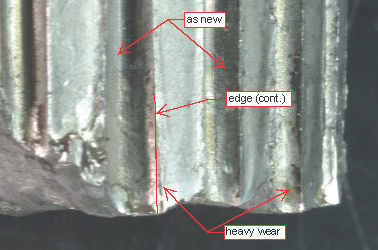goodbadgood
Materials
- Sep 24, 2014
- 40
Hi
One of our drive shaft is failed during service at the area where splines are located. the material is nickel alloy. The fracture surface is oriented at 45 degrees. the chemical and mechanical properties are perfect. some ratchet marks were also observed at spline root while at one location at spline root crack was also observed. Deformation marks were also observed at the spline where fracture has occured by looking at the fracture orientation can we say that the fracture is torsional overlaod failure with fatigue crack initiation? i have uploaded the side view of the shaft. Kindly provide your feedback.
One of our drive shaft is failed during service at the area where splines are located. the material is nickel alloy. The fracture surface is oriented at 45 degrees. the chemical and mechanical properties are perfect. some ratchet marks were also observed at spline root while at one location at spline root crack was also observed. Deformation marks were also observed at the spline where fracture has occured by looking at the fracture orientation can we say that the fracture is torsional overlaod failure with fatigue crack initiation? i have uploaded the side view of the shaft. Kindly provide your feedback.

